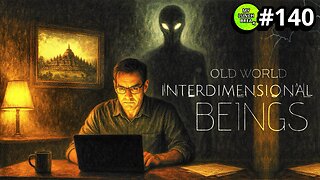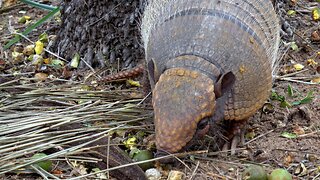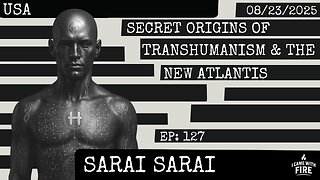Premium Only Content

Lum and Abner 38-12-23 - Lum and Abner's Christmas Story
Christmas, celebrated by most Christians on December 25, commemorates the birth of Jesus of Nazareth. Americans, like many of the world’s peoples, have developed their own Christmas traditions and observances, and these have changed greatly over time.
Today, most Americans blend religious and secular customs with their own family traditions, often incorporating food, decorations and rituals from places they or their ancestors once called home. Roast turkey and ham are popular for Christmas dinner throughout the country, but depending on the region, so are tamales, roast goose with red cabbage, crawfish jambalaya, roast pork or “seven fishes” seafood salad.
In the Southwest, luminarias — lanterns made from brown paper bags weighted down with sand and illuminated by a lit candle — are displayed on Christmas Eve. Many Mexican Americans celebrate Las Posadas, a procession that re-enacts Mary and Joseph’s search for a place to bed down in Bethlehem. Swedish Americans hold St. Lucia festivals, and in Puerto Rico there are parrandas, where friends go from one house to the next singing traditional songs, “surprising” their friends and waking them with their music.
DEVELOPMENT OF THE AMERICAN CHRISTMAS
The early New England Puritans frowned on boisterous Christmas celebrations. In 1659, the Massachusetts colonists briefly criminalized observance of the day, and Christmas remained a regular workday in much of New England and Pennsylvania. Other parts of British North America, however, celebrated with gusto, with costumed revelers going door to door and receiving small gifts of food and drink.
The modern, commercialized Christmas began to emerge in the 19th century with the new custom of purchasing gifts for young children. Seasonal “Christmas shopping” began to assume economic importance.
Other Christmas traditions similarly began during the 19th century. Santa Claus — derived from the Dutch Sinter Klaas and the German Saint Nicholas — assumed the persona of a jolly dispenser of gifts and pilot of a reindeer-drawn sleigh through such works as the 1823 poem “A Visit from Saint Nicholas.”
Germany is credited with starting the tradition of Christmas trees in the 16th century. According to legend, the Protestant reformer Martin Luther first added lighted candles to a tree to remind his children of the wonders of God’s creation. Christmas trees became popular in Britain and the United States in the 19th century.
-
 24:39
24:39
MYLUNCHBREAK CHANNEL PAGE
1 day agoInterdimensional Beings at Borobudur
22.6K14 -
 12:42
12:42
Scammer Payback
21 hours agoCalling Scammers who were Raided
3.76K8 -
 23:31
23:31
IsaacButterfield
14 hours agoThe Woke Mob Is Really CANCELLING Matt Rife For THIS…
2.83K7 -
 1:23
1:23
WildCreatures
8 days ago $0.90 earnedThis mother armadillo eating her palm nuts is truly adorable
3.82K10 -
 8:59
8:59
The Art of Improvement
9 hours agoHow to Build the Most Powerful Mindset for Success
2.2K -
 LIVE
LIVE
GritsGG
1 day ago36 Hour Stream! Most Wins 3420+ 🧠
942 watching -
 1:26:16
1:26:16
Michael Franzese
19 hours agoMenendez Brothers Denied Parole – Newsom Holds Their Fate
112K84 -
 2:36:02
2:36:02
I_Came_With_Fire_Podcast
17 hours agoSecret Origins of Transhumanism & The New Atlantis
34.8K17 -
 LIVE
LIVE
sophiesnazz
3 hours ago $0.03 earnedLETS TALK ABOUT BO7 !socials !specs
38 watching -
 3:01:44
3:01:44
MadHouseRetro
4 hours agoPUFFCO PIVIOT BUNDLE GIVEAWAY! and Spider-man 2 playthough!
12.6K1